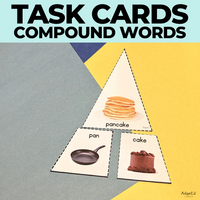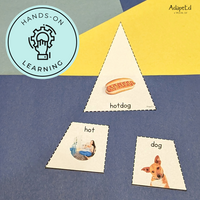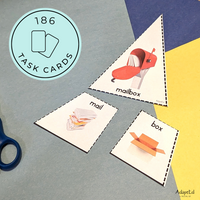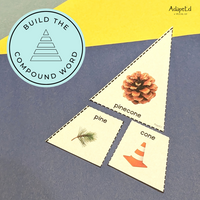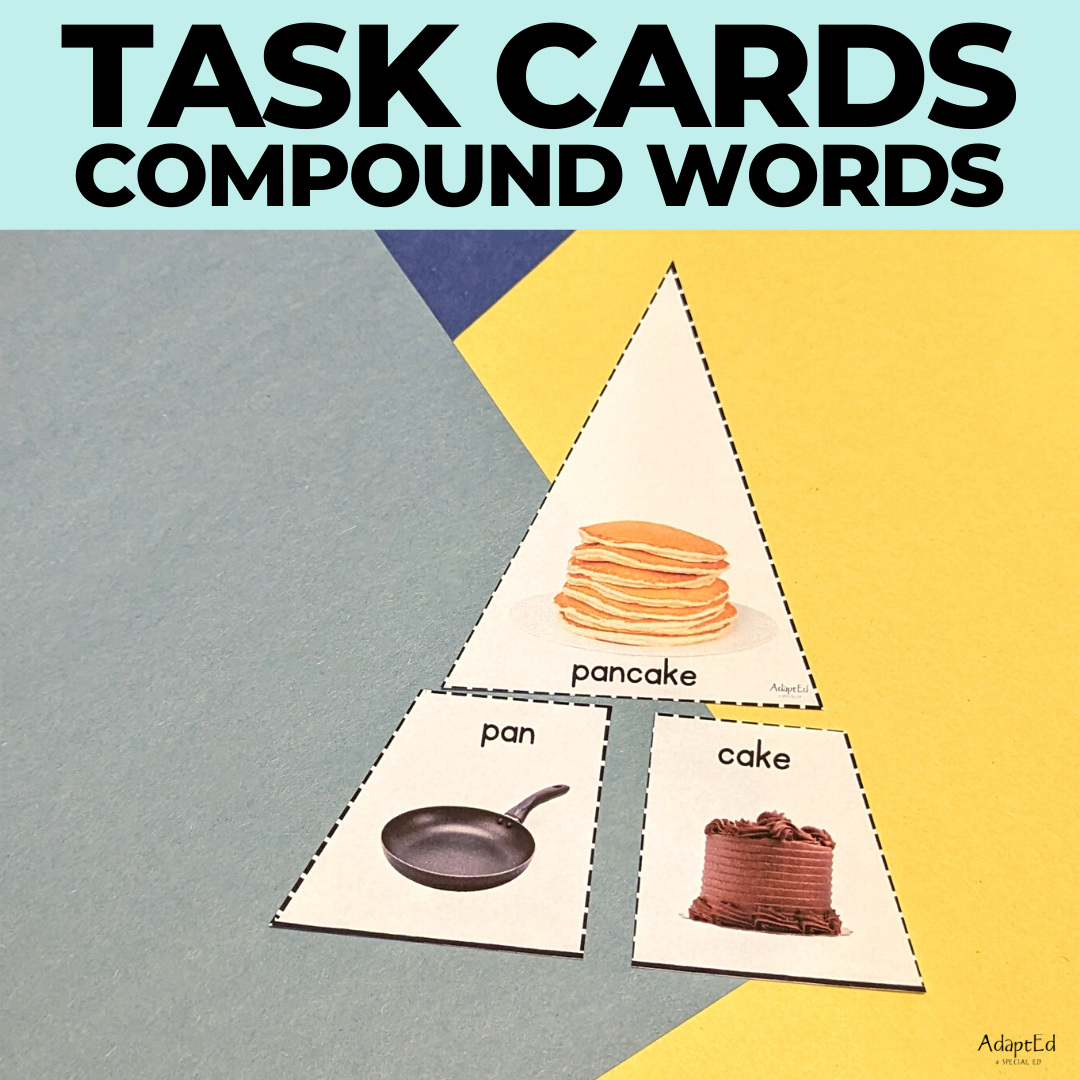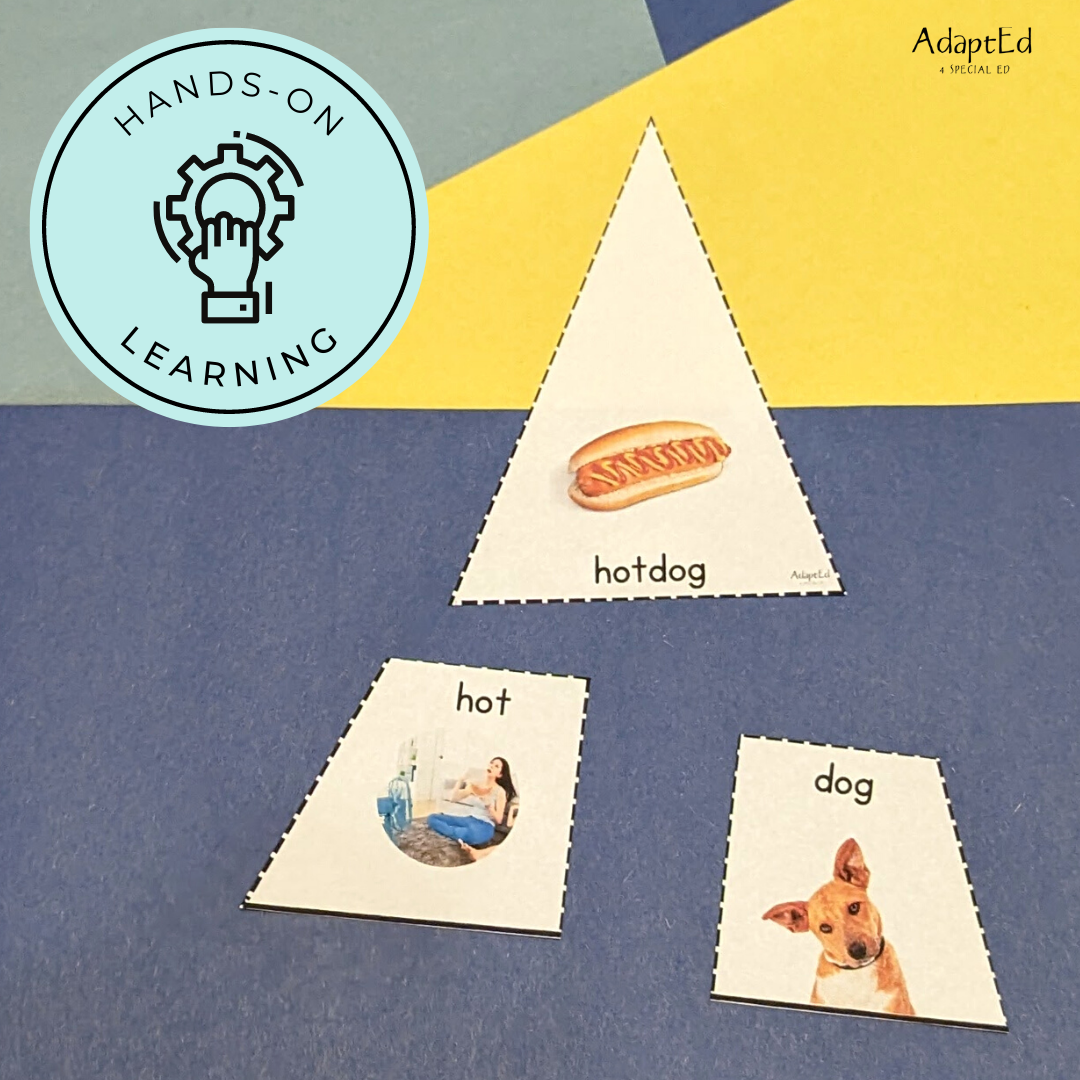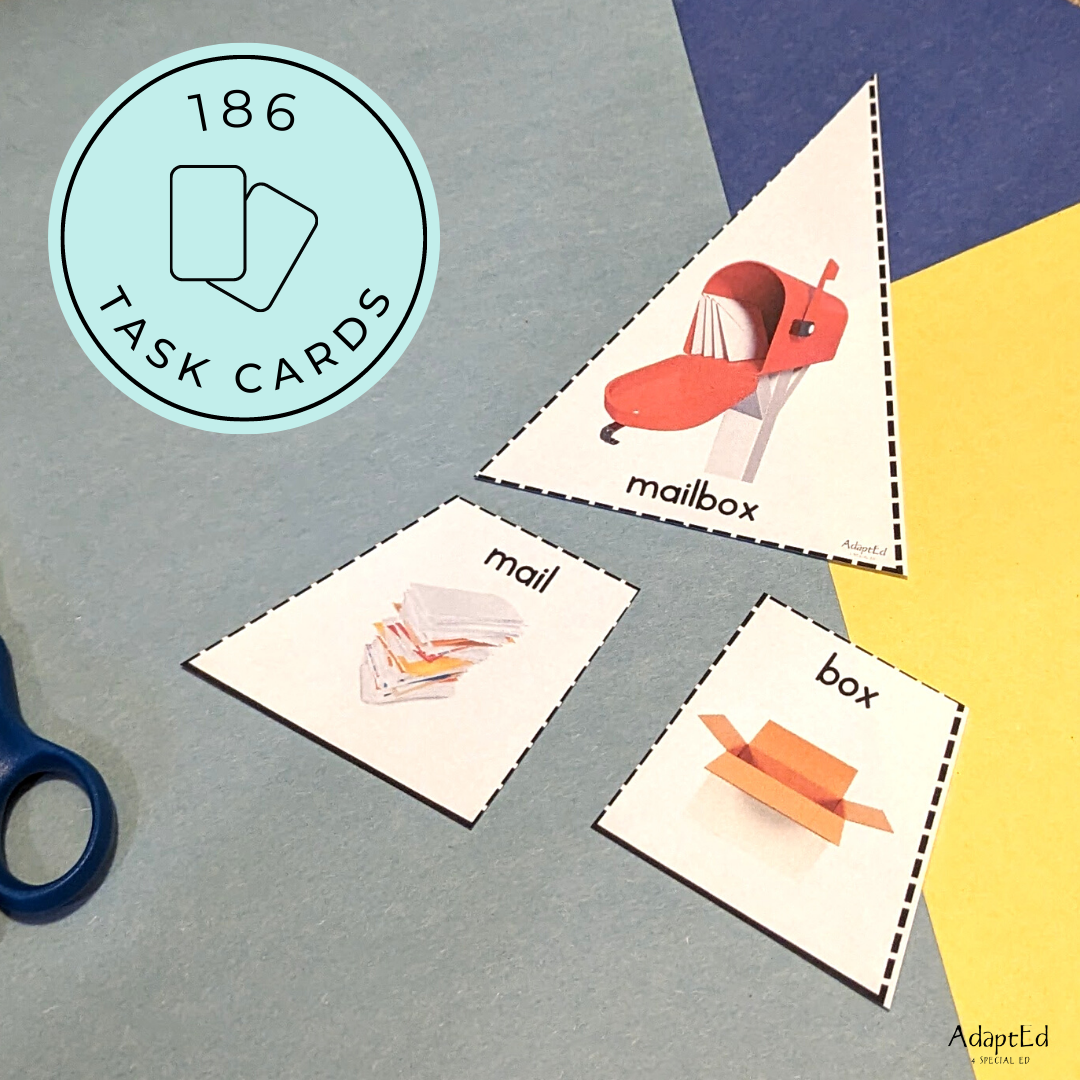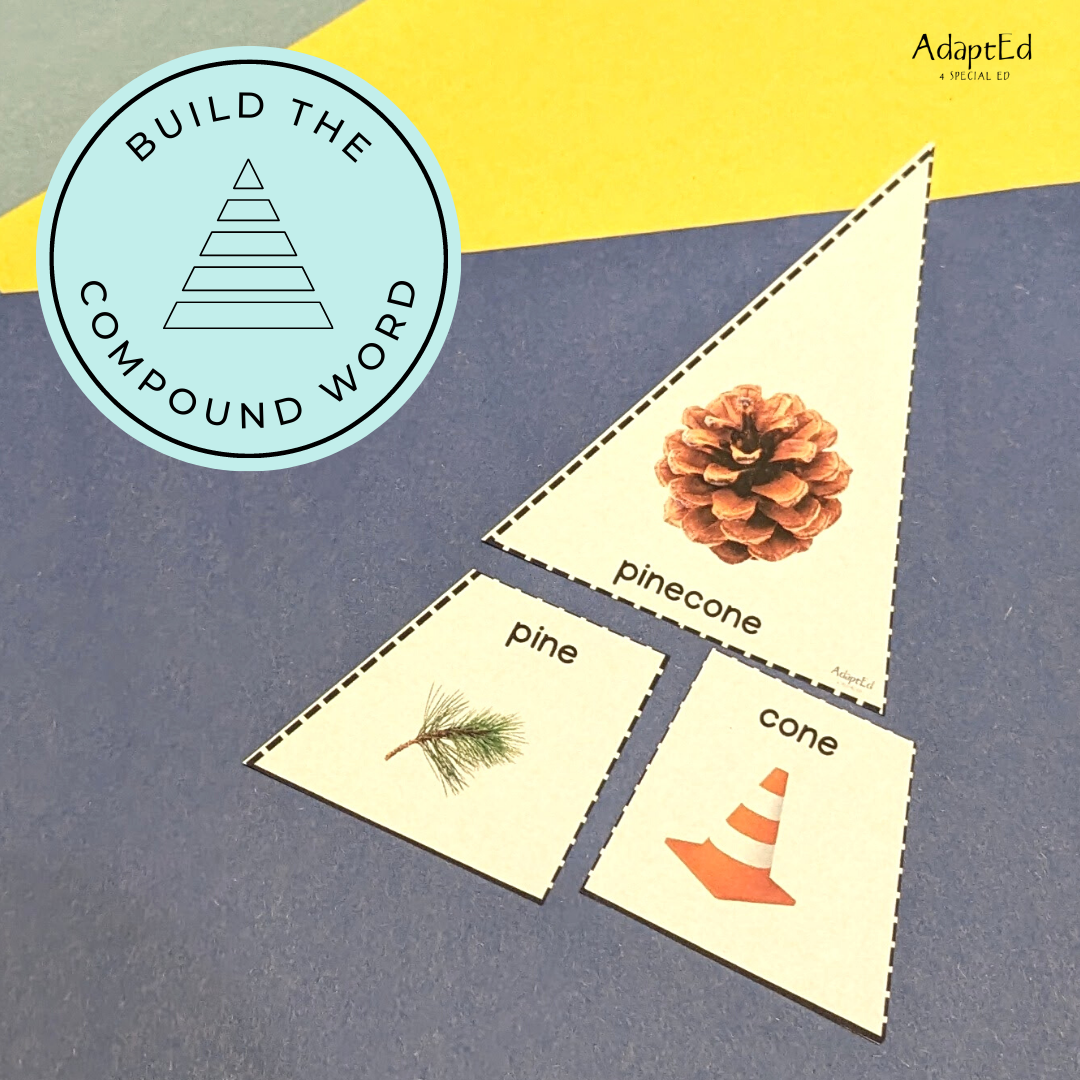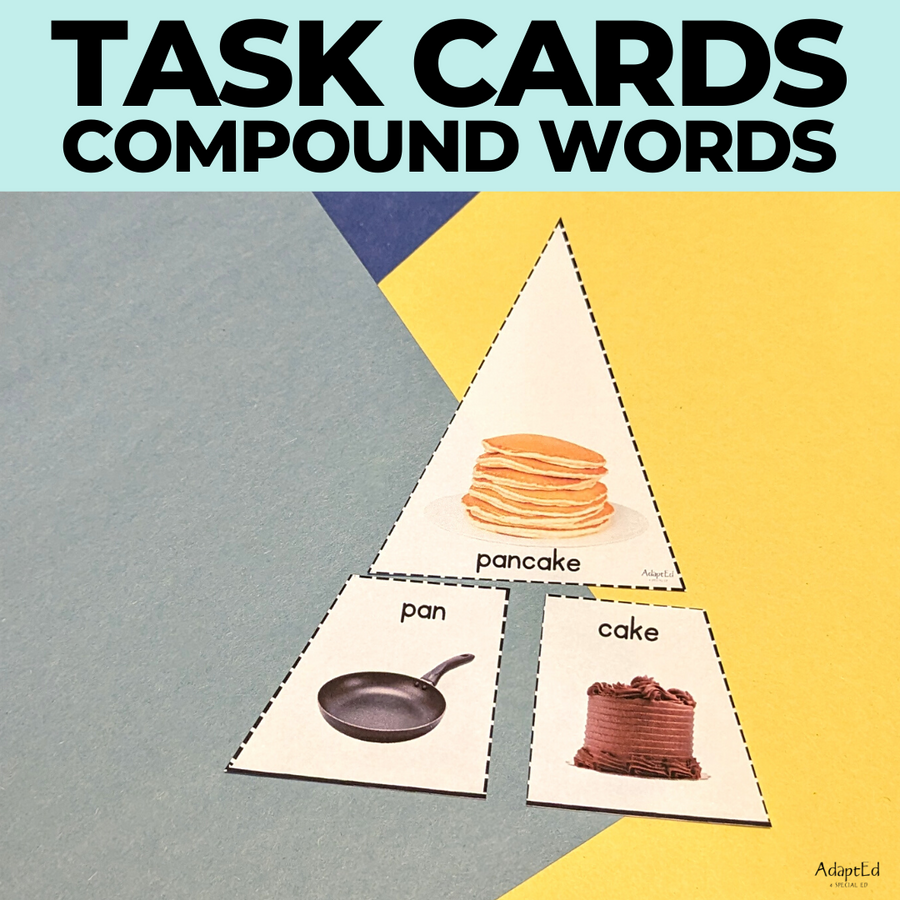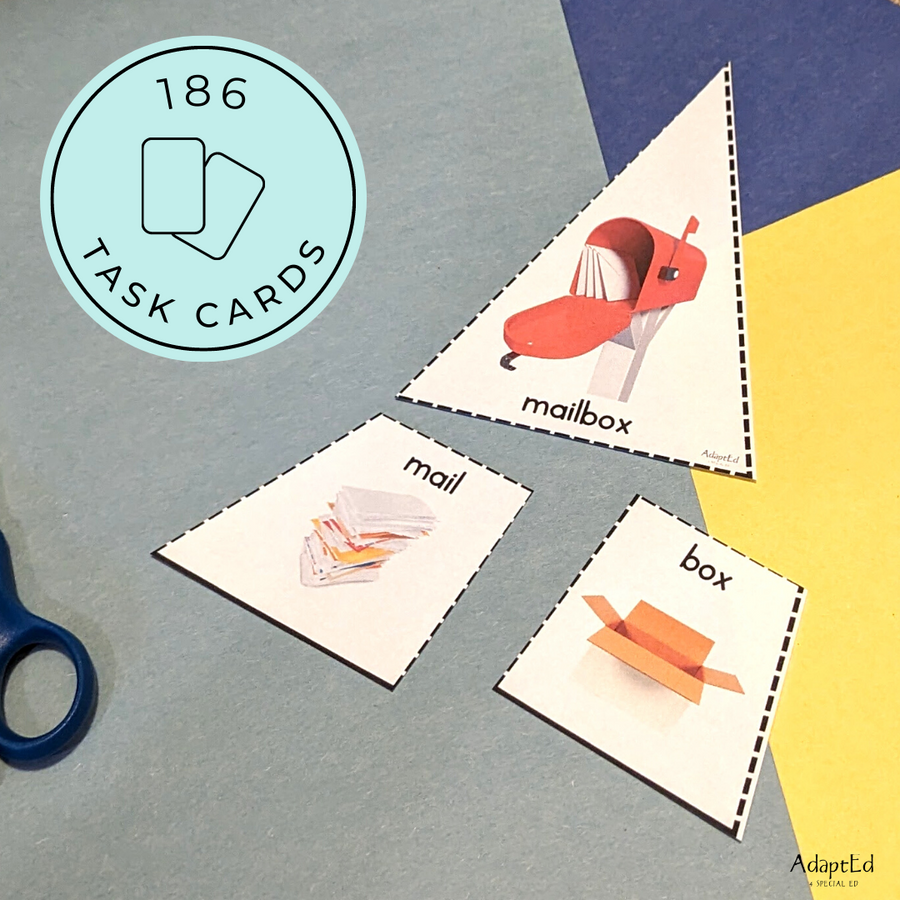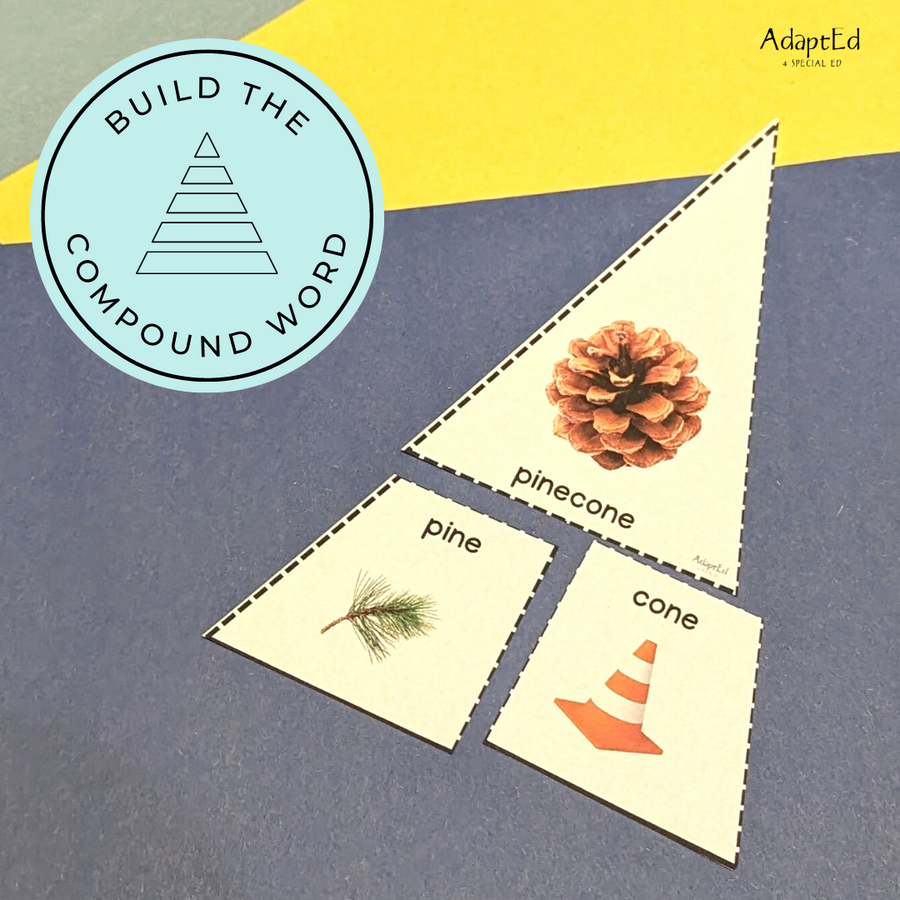Compound Words Task Cards
This set is perfect for special education classrooms and beginning readers who are learning how to read. With 93 compound words included, this set is designed to help children develop their phonemic awareness skills and improve their reading abilities.
Here are some of the benefits of using compound words in special education:
-
Enhances Phonological Awareness: According to research, teaching compound words can enhance phonological awareness, which is an important skill for early reading development (Barton & Hargreaves, 2018). By breaking down compound words into two parts, children can learn how to identify and manipulate individual sounds in words.
-
Improves Vocabulary: Learning compound words can also help children improve their vocabulary skills. As they learn about word families and patterns, they can apply this knowledge to other words they encounter in their reading (Cunningham & Stanovich, 1997).
-
Increases Reading Fluency: When children are able to quickly recognize and decode compound words, it can increase their reading fluency. This means that they can read more smoothly and with greater comprehension (Wolf & Katzir-Cohen, 2001).
Our Building Compound Word Task Cards come in two levels - one with pictures and words and another with just pictures.
This makes it easy for teachers to differentiate instruction based on the needs of their students. The task cards are also versatile and can be used in a variety of ways such as centers, small group instruction or independent practice.
Don't miss out on this must-have resource for your special education classroom!
Order your set of Building Compound Word Task Cards today!
Sources: Barton, D., & Hargreaves, L. (2018). Teaching early reading: Principles and evidence. Sage. Cunningham, A. E., & Stanovich, K. E. (1997).
Early reading acquisition and its relation to reading experience and ability 10 years later. Developmental Psychology, 33(6), 934–945. Wolf M., & Katzir-Cohen T.(2001)
Reading fluency and its intervention Scientific Studies of Reading;5(3):211–39


